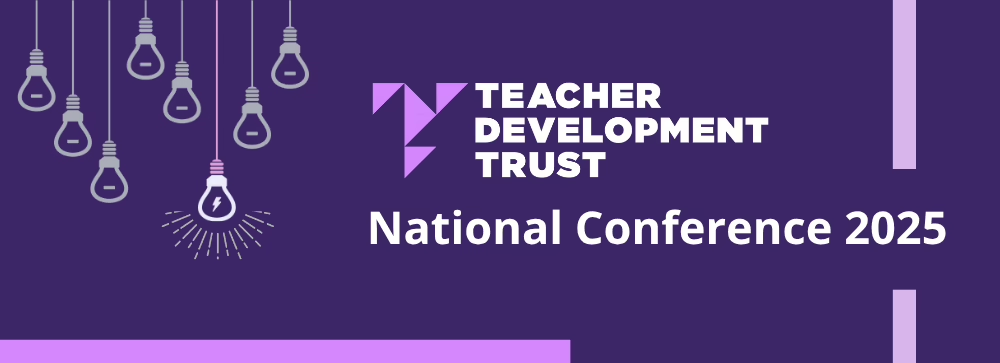The latest CPD statistics from SchoolDash is published today and it shows a challenging picture in terms of spend on professional development by schools in England. Coming in the midst of a General Election campaign – in which the idea of an entitlement to professional development has been proposed by at least one party – what can we learn from the data about how the next government might respond?
Spending on CPD is lower than it was in 2016 and is flat-lining in absolute terms…
Last year we saw a promising increase in spend on professional development across schools as they looked to recover from the impact of the pandemic, but progress appears to have stalled this year:

This means that overall notional spending is still lower it was in 2016 by some margin across all schools taken together, led by a drop in primary school spending of around 25 per cent since 2016. The overall figure has dropped from £602 per teacher in 2016 down to £506 in 2023.
… but is significantly lower than in 2016 in real terms
This figure is depressing enough, but it gets even worse when we start to take account of inflation. For primary schools, the data show a drop of 50 per cent in real terms from 2016, a figure that looks only marginally better for secondary schools where a 30 percent drop in real terms has been felt. Such a drop is perhaps unsurprising given the wider financial pressures that we know schools have been under in recent years, but it is nonetheless a challenge to the system when we know that the single biggest in-school factor in terms of pupil outcomes is the quality of teaching. If schools are finding it increasingly difficult to prioritise development for teachers, it will begin to have an impact on teaching quality over time.
Schools dealing with higher proportions of poverty have had to cut the most
Even more depressingly, those schools supporting children in the most challenging financial circumstances have also been the schools reducing their spend on professional development by the highest proportions, as the data comparing pre- and post-pandemic spending shows:

This is particularly concerning because the evidence shows that high quality professional development is key in helping to close the disadvantage gap. Of course we do not know what professional development has been funded and no doubt some of it will not be of the high quality required to have an impact – but we have no reason to think the proportion of well-targeted professional development has shifted between 2019-2023, and so have to fear that schools working in high areas of deprivation – indeed in all areas – are simply less able to spend money on effective professional development for their teachers.
Being in a MAT doesn’t seem to help
One of the hopes of the expansion of Multi-Academy Trusts (MATs) is that they will be better able to support the professional development of teachers and school leaders, in part because the economies of scale inherent in operating as a MAT would release funding for school improvement work, including professional development. Yet the data does not support this hope:

Contrarily, large MATs have seen the biggest proportionate fall in spend on professional development, whereas Single Academy Trusts – who will not benefit from any economies of scale – are the ones to buck the trend. This sits uncomfortably with the creation of roles in MATs supporting professional development, and it may be that spending has been replaced with offers developed in-house, supported by new teams of CPD leads (many of whom are firmly committed to understanding and responding to evidence). This feels like an area that would benefit from further investigation.
What is the impact of NPQs?
One thing that this data cannot capture is the impact of the ‘Golden Thread’ – the government funding of the new Early Career Framework (ECF) to support new teachers that came into force in September 2021, and the revised National Professional Qualifications (NPQs), both of which received generous funding in this period. Taken together, more than a fifth of the profession has been able to access government-funded and developed professional development through the Golden Thread. Against a backdrop of financial constraint, it is an understandable decision for a school to reduce the amount it would spend on other forms of development and instead seek to take advantage of government-funded offers.
Whilst we can be confident that the quality of NPQs is strong – they are delivered against a framework of evidence overseen by the Education Endowment Foundation and providers are subject of Ofsted inspection – they cannot cover every development need. They are a challenging qualification that takes between 12-18 months to complete and are not suitable for every development need. Most teachers are unlikely to undertake more than two in their career.
So, although the funding for the NPQs has been welcome (and we argue should continue), it is not the panacea for all development needs, nor can it respond to all contexts and circumstances.
How might the next government respond?
Whichever party forms the next government will need to take the funding and promotion of professional development seriously, not just because it is an investment in the quality of teaching (and therefore outcomes for children), but because it is a demonstrable way to value the profession, to encourage recruitment and help improve retention – both issues that sorely need attention.
An entitlement for professional development could be an effective approach – as long as it is implemented with care and supports teachers and school leaders without undue burdens. If done well, we should see a welcome reversal in the downward trends shown in these data. If nothing changes and we continue to see real-terms spending on professional development fall, it is only a matter of time before we start to see an impact in terms of declining standards overall.



